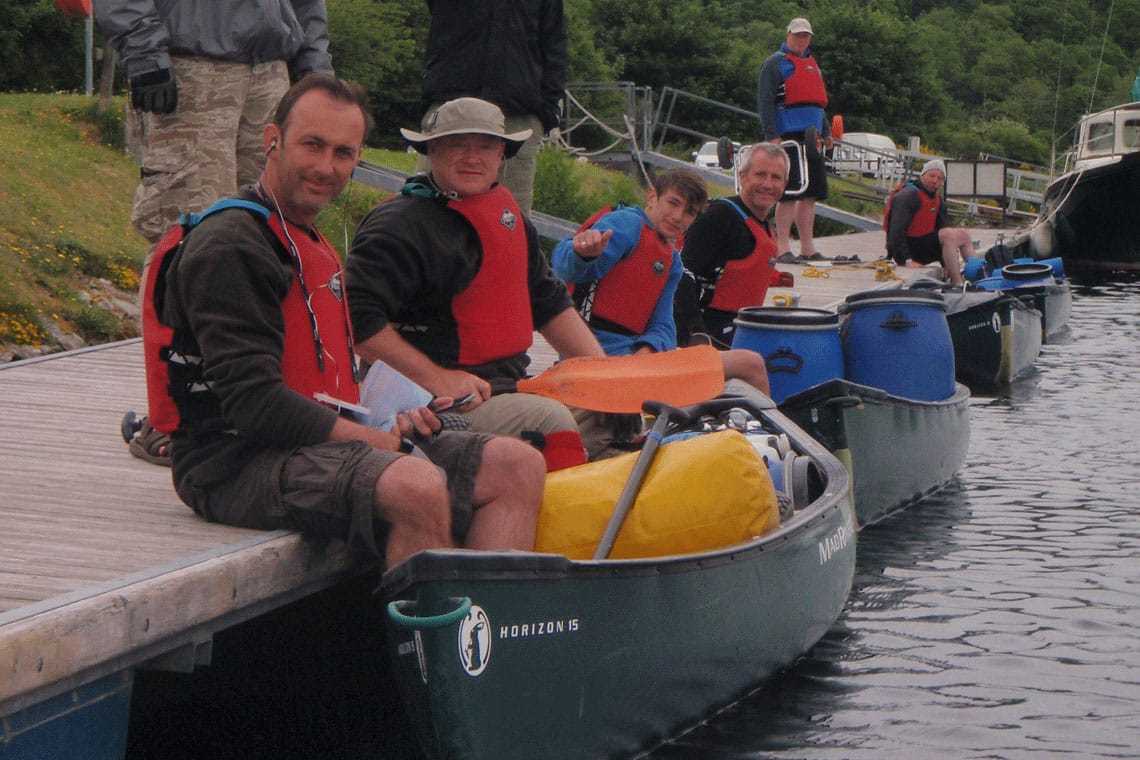
The Canadian Canoe – Your Perfect Travel Partner
The open canoe is a remarkably versatile craft and it can open the door to a variety of great adventures. Load it up with the family and a picnic for a gentle float on your local loch or pack your tent, or load the camping kit and head off for a canoe camping adventure. To help you plan your first foray into canoe camping and make sure your trip is a success, here are a few pointers.
Before You Even Get In The Boat
Planning Your Canoe Camping Adventure
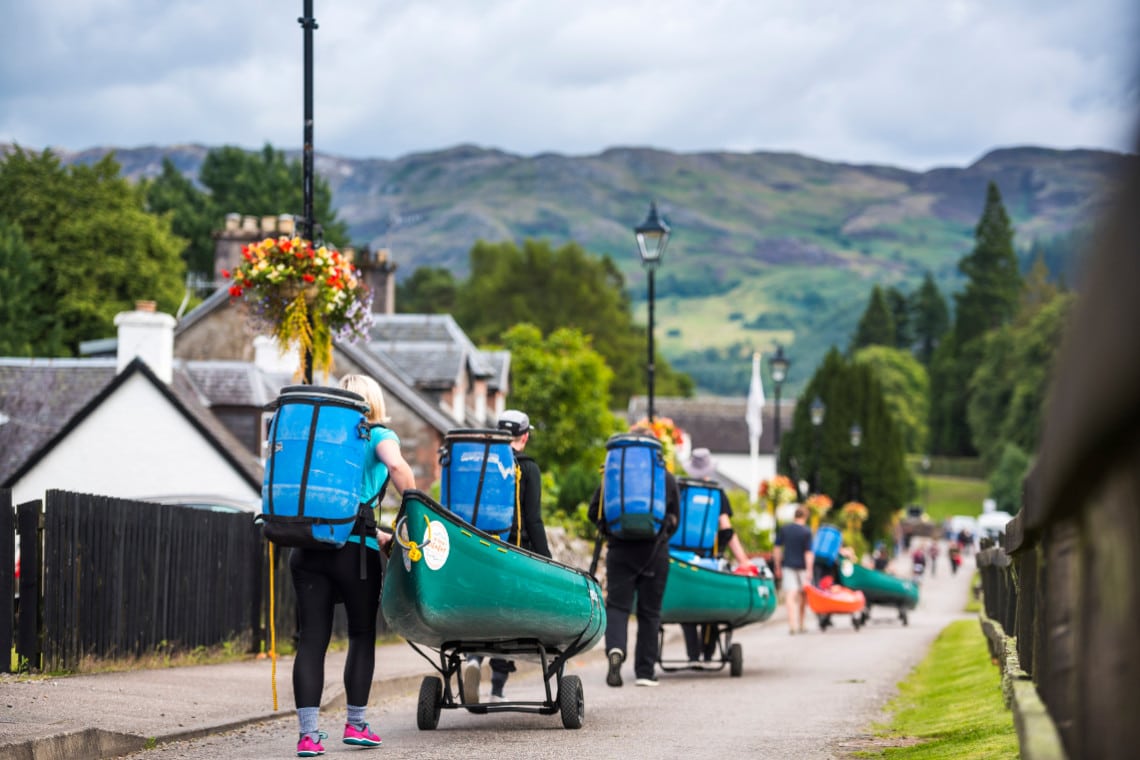
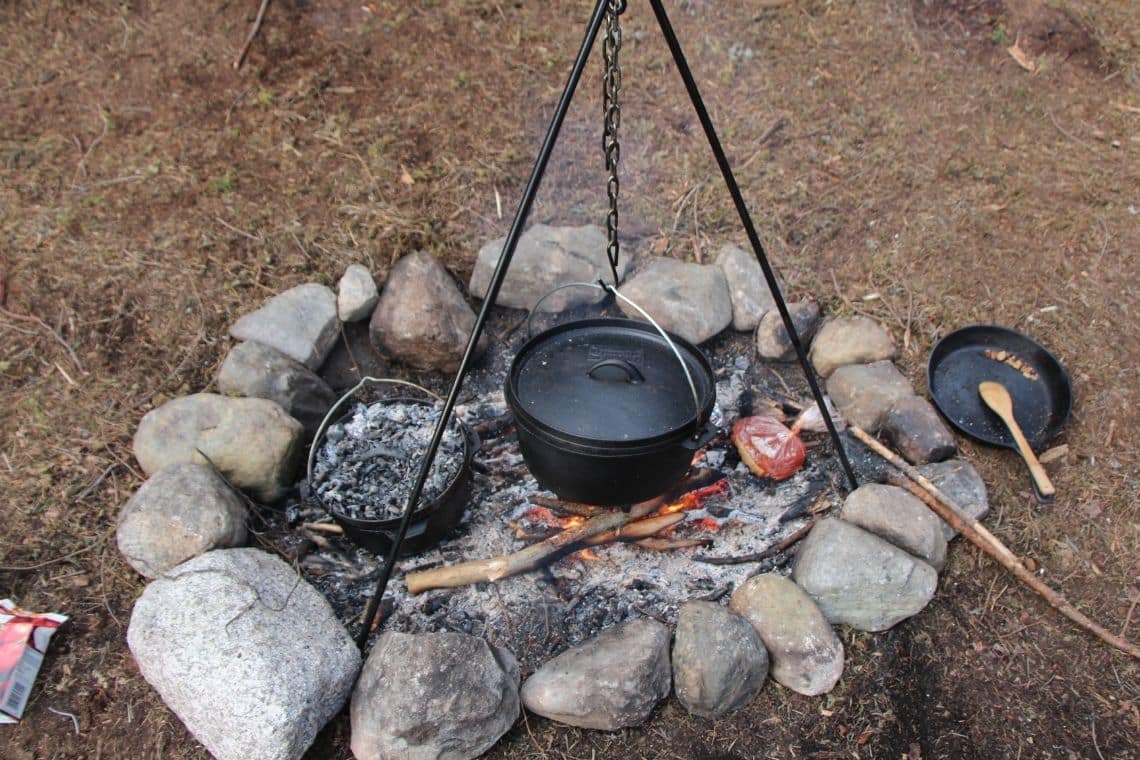
Gear and Equipment for Your Canoe Camping Trip
Step two in your canoe camping adventure is organising your equipment. An open canoe can carry quite a load, but you don’t want to over do it, especially if there’s a portage or two involved (portages are when you have to take your boat out of the water and carry it around an obstacle).
Check your boating gear first. Are your canoe and paddles in good condition? It’s much easier to do any necessary repairs or to purchase any replacements before you head out on your canoe camping trip. Make sure you have clothing suitable for the conditions, even in summer take extra thermal layers, a hat, gloves and wet-weather gear. A set of outer shells (cag and bottoms) can also double up as off-the-water wear, if you encounter wet weather.
Cooking on an open fire is fun and for many canoe camping enthusiasts it’s an essential part of the trip. Be aware of your environment, using a fire box or fire pan (FREE on request from In Your Element for equipment hire customers) to protect the ground is always a good idea and it can be as simple as a biscuit tin stood on a couple of rocks or logs. If you opt for a camping stove make sure you have enough fuel with you – it’s always better to take extra, just in case.
A cold-box or bag is useful and make sure you have enough freshwater with you. River water is fine for washing in, but it’s not always OK to drink. What other camping equipment you choose to take on your canoe camping adventure is up to you, but a descent sleeping bag and mat should both be high on your list of priorities. REMEMBER – the more you take with you the more you have to carry!
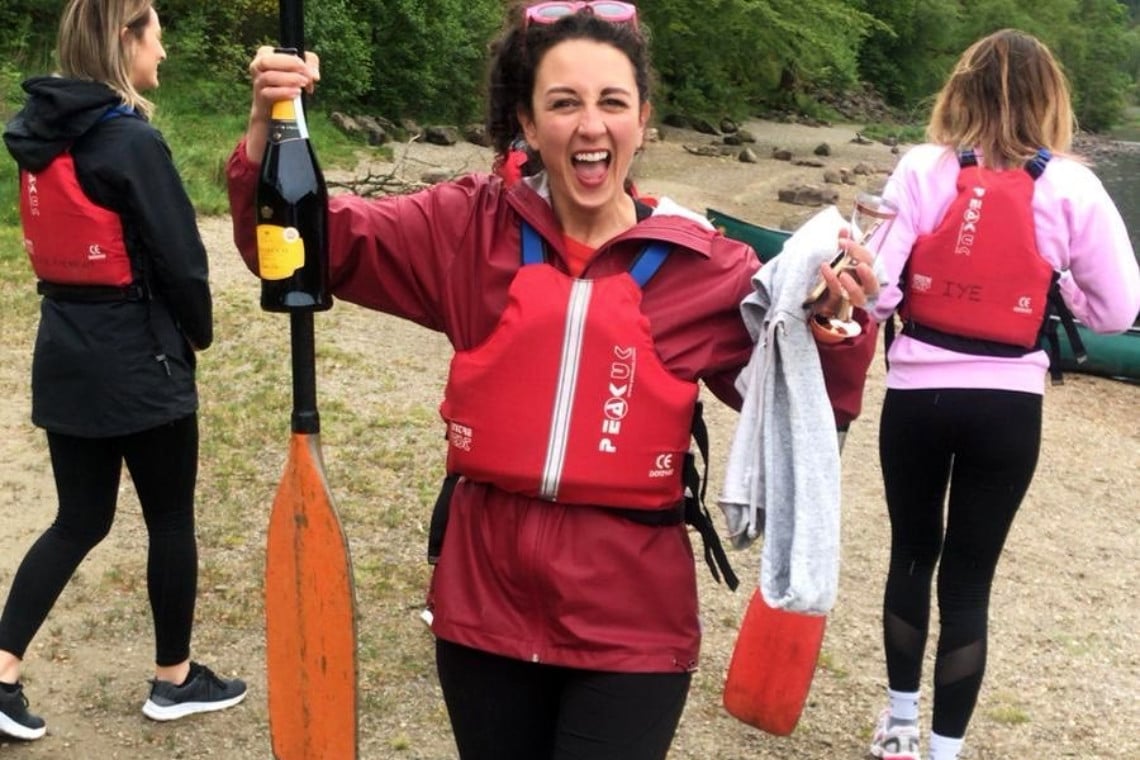

Packing Your Gear and Loading the Boat for Your Canoe Camping Adventure
Packing and loading your boat for a canoe camping trip are important exercises. Obviously you want to keep things dry and when heading out canoe camping, most paddlers will use either dry bags or waterproof barrels to store their gear in and keep it dry in the event of an unplanned capsize or rainstorm.
Dry bags are available from most canoe shops (or available for hire from us) and the most suitable ones for open canoe camping are made from a strong abrasion resistant material and feature rucksack-style shoulder straps for easy carrying if you need to portage. They are also simple to pack into the canoe as they squash into place easily and some models even feature a clear window in the bag to make it easier to find items packed nearer the bottom.
The barrels are made from tough plastic and have either screw on or clamp on lids. They are possibly the most hardwearing solution available for keeping things dry but are not so easy to pack and secure into a canoe. They’re also not the most comfortable things to carry if you find yourself having to portage during your canoe camping trip.
A large 100-litre dry bag, with carry straps, to carry all the equipment needed for canoe camping and a smaller bag for daytime equipment, such as waterproofs and spare clothes, are usually sufficient.
You need to have a plan when packing for your canoe camping trip and it’s best to make sure that you pack the things that you’ll need first near the top, so that they’ll be easily accessible when you make camp. In the top of your smaller daytime dry bag, pack a first aid kit, waterproofs and snacks.
Keep a head torch and matches or a lighter at the top of one of your bags, especially if you’re canoe camping in the autumn and winter months. If you arrive at camp as it gets dark it will be the first thing that you’ll need to find everything else. Be sure you always carry spare batteries and a spare bulb for your head torch too.
Choosing what to take on your canoe camping adventure is never easy and only experience, over a few trips will tell you what you need. Make a note of the gear that seems to be often in use during a trip, as well as the things that rarely make their way out of the bag.
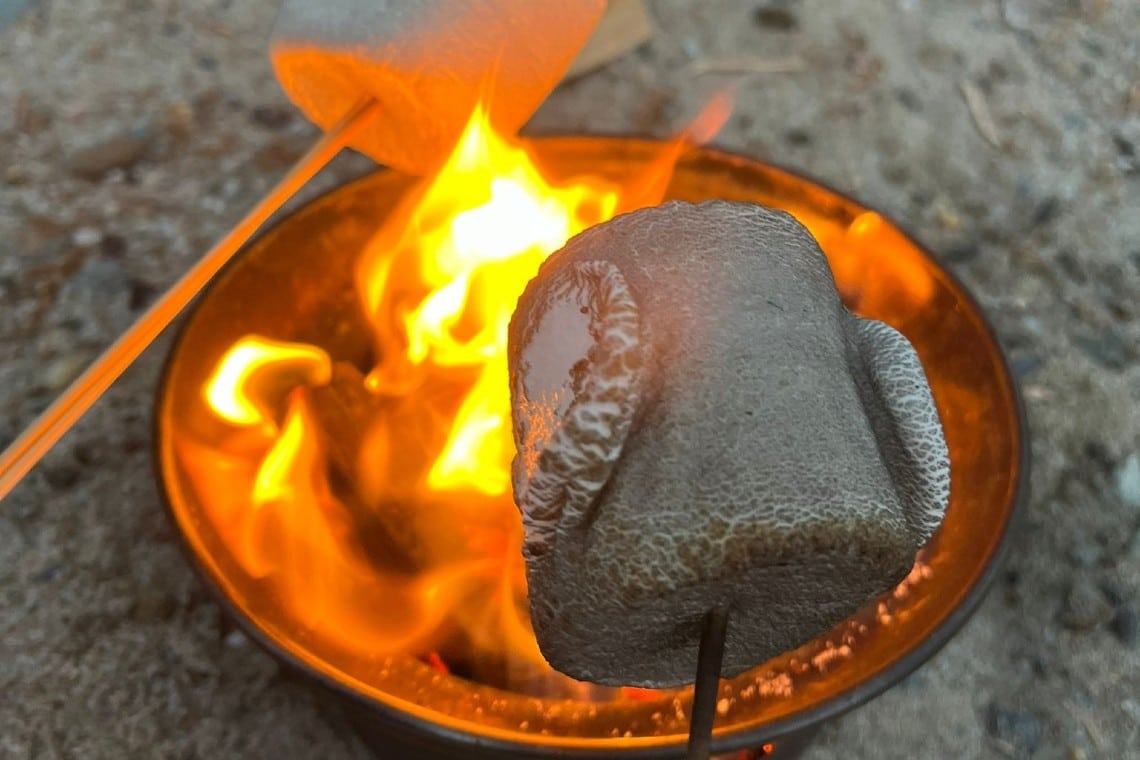
Wild Camp Cooking
A canoe camping trip wouldn’t be complete without a backwoods banquet and although you may be swayed by the lure of freeze-dried food or pre-prepared food in foil packets, it’s often easier, cheaper and a whole lot tastier to prepare fresh meals.
These can be cooked on camp or with a bit of planning you can cook things like stews, sauces, chillies and curry at home, and then freeze them ready to be re-heated during your canoe camping adventure. An old sea kayaker trick is to get cuts of meat vacuum packed by the butcher and then frozen. These then act as extra cold blocks to keep your perishables fresh, but then defrost ready for you to have fresh meat during your trip.
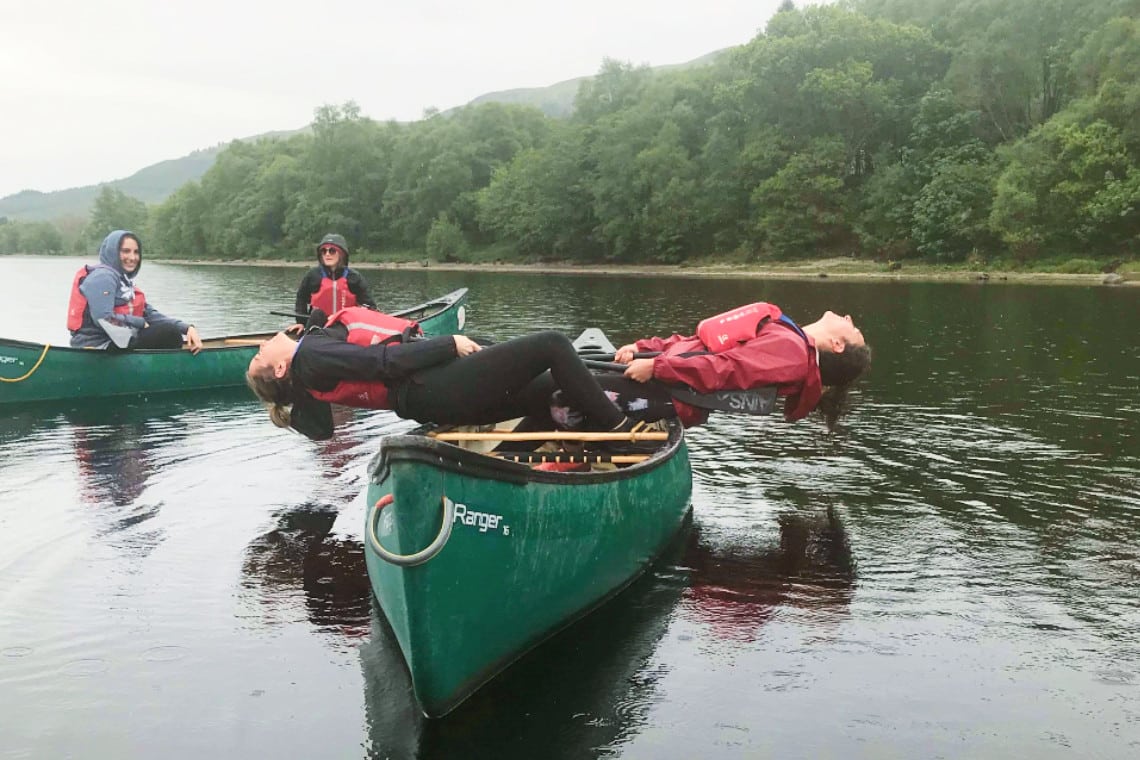
Keeping Your Boat in Trim
All of this canoe camping gear must now fit into the canoe, and fit well. One of the best tricks to successful open canoe (and kayak) paddling is to trim the boat correctly for the weather conditions. Trim is the term used to describe the way the weight is balanced in your canoe and is dictated by where you and your gear are positioned in the boat.
As a rule of thumb, trim the canoe slightly bow (front) heavy when you are heading into a head wind, stern (rear end) heavy for a following wind and level for fair weather. Pack the larger dry bags into the middle of the canoe one either side of the centre yoke, this should balance the weight out nice and evenly. Your smaller bag can sit within reach of you, so it’s easy to grab if you should you need it.
When it comes to securing your bags or barrels into your canoe there are a few options, lashed in tight, on a line or loose. Lashed in tight to the canoe is ideal for trips where there may be some rough or even white water as the dry bags or barrels add extra buoyancy to the canoe and will not float away in the event of a capsize. The extra weight of the bags, however, can make rescuing the canoe a much harder job. When paddling on flat water, dry bags can be left loose in the canoe.
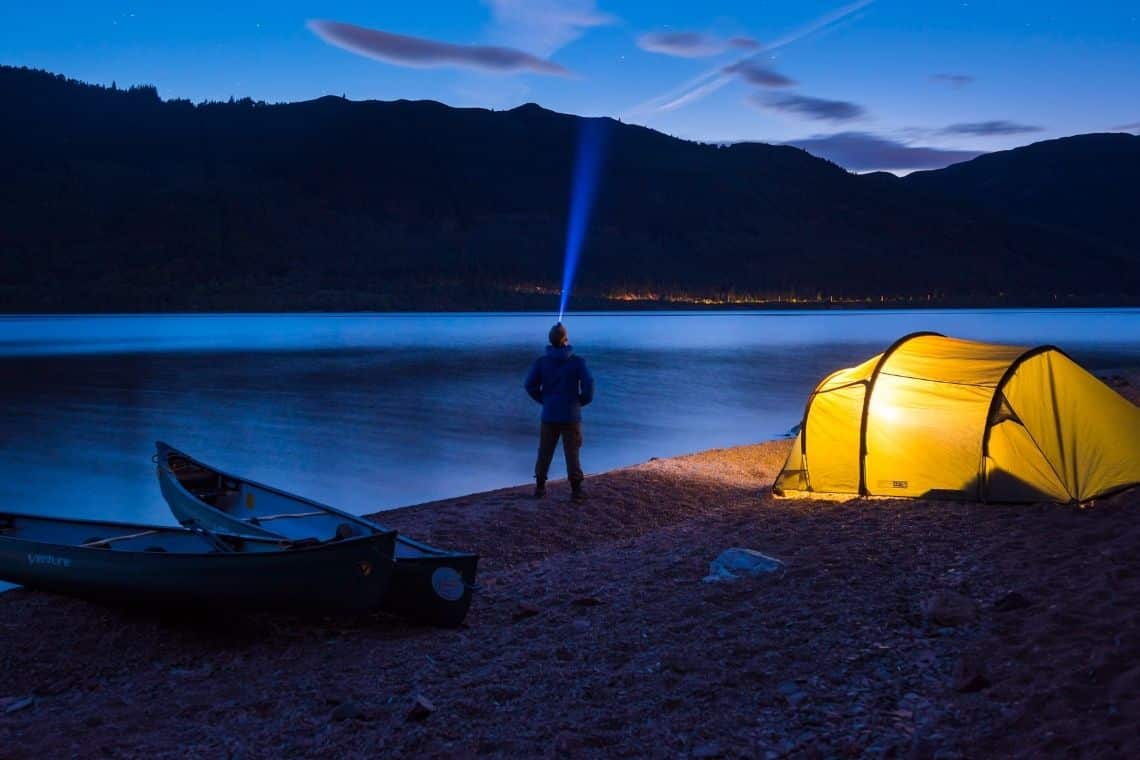
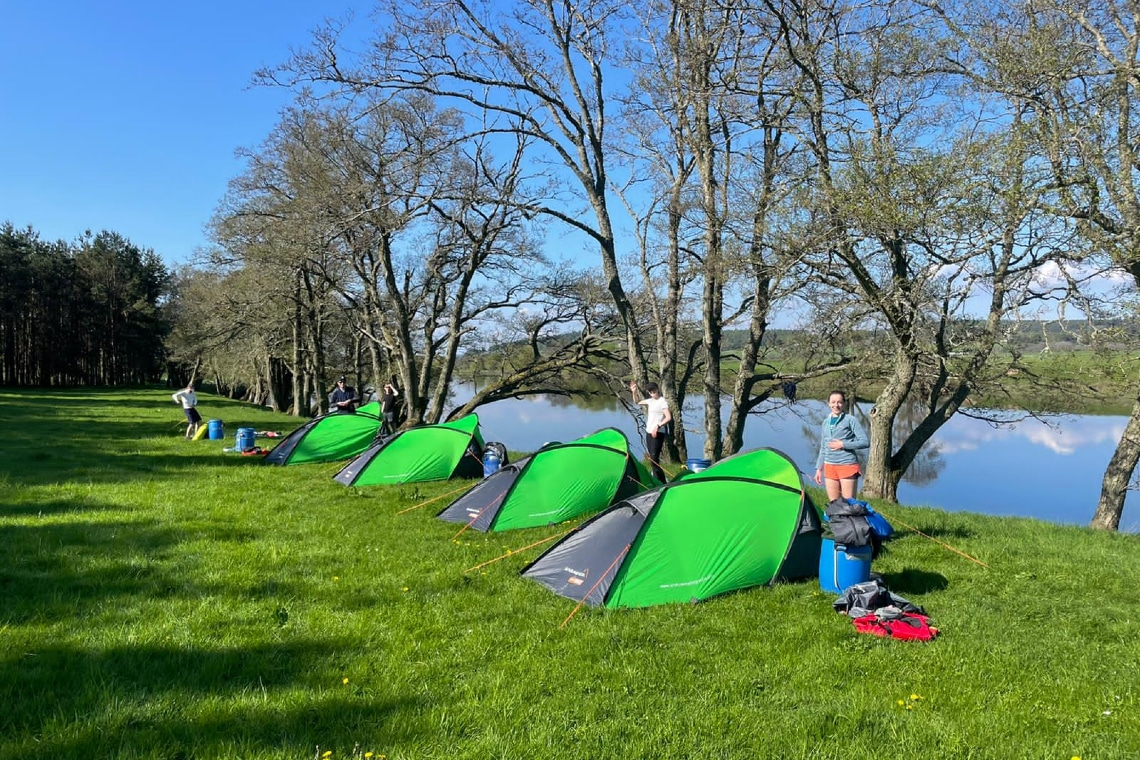
Setting Up Camp on Your Canoe Camping Adventure
Once you have reached your chosen camping spot it’s time to utilise a different set of skills. Firstly secure the canoes or carry them to camp to use as windbreaks, next get out the stove and get some water on for a brew.
Look for a good place to pitch the tent or stretch out the tarp, look for sheltered places with flat ground to sleep on and no obvious dangers, large dead branches in the trees above, or a location very close to the high water mark are both obvious things to look out for. If you need to set up a camp toilet make sure you are well away from any water sources to reduce the likelihood of contaminating water supplies.
If everything has gone to plan, your tent or tarp should be up by the time the tea water has boiled. If you have the option of an open fire, use existing fire pits, set it on non-gravel or stones, or break out your firebox and collect some dead wood ready for when it gets dark. Try not to dig new fire pits in the grass as this kills the roots underneath and takes a long time to regrow. Make sure you collect enough wood, as searching for wood in the dark is no fun. Don’t be tempted to break branches off trees to burn – firstly they won’t burn well if at all, and secondly, you’ll damage the tree.
When preparing dinner hygiene is important so be sure to wash your hands before starting to handle food and before you eat. A bottle of disinfectant gel is a quick, easy, and efficient way of keeping your hands clean.
With dinner done, it’s time to swap boating tales around the campfire, if you have one, and maybe enjoy a wee nip, a glass of vino, or maybe one last brew before hitting the sack for a good night’s kip.
Now you’ve got the basics sorted there’s nothing left to do but pack up your gear, round up your paddling partners, and head out on your own canoe camping adventure!
